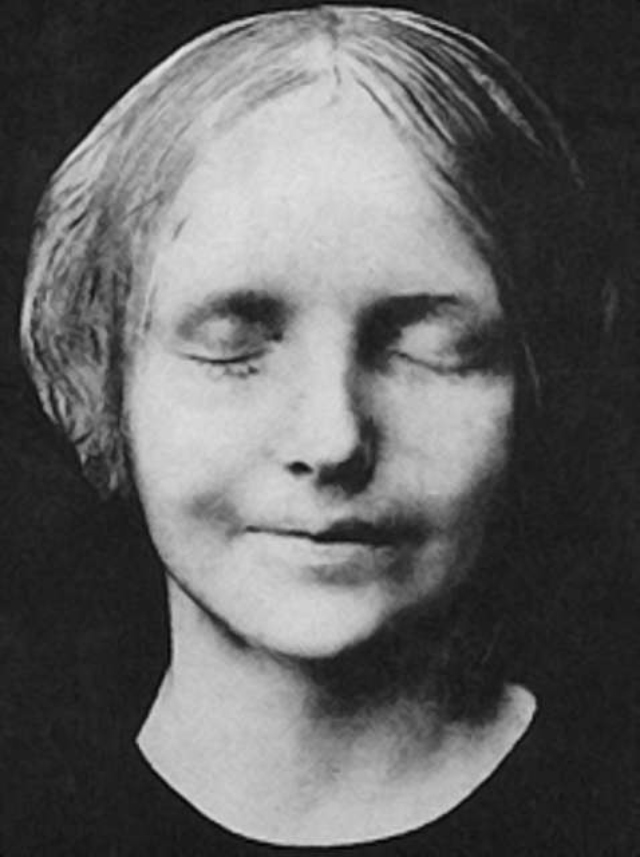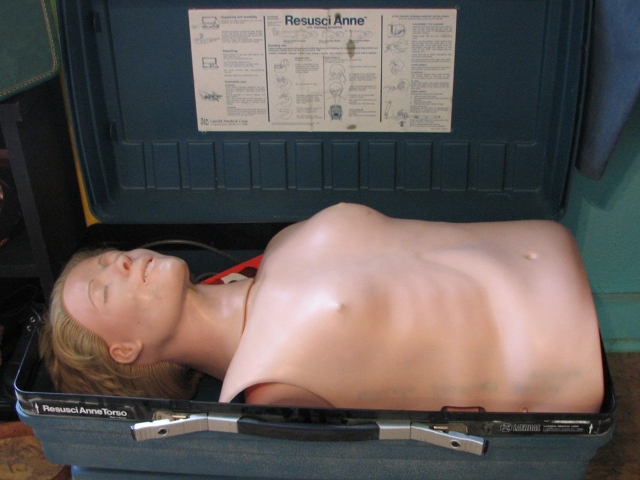[imagesource:flickr]
In the late 19th century a young woman’s lifeless body was pulled from the Seine river in Paris. Nobody knew who she was or what caused her death as she had no visible injuries. It was believed that she committed suicide by drowning, but what made the grisly discovery unique was the absolutely serene look on her face when she was pulled from her watery grave. With eyes half closed, she had an enigmatic final smile on her face and looked almost peaceful.
As customary in those days, unidentified deceased were placed in a window for viewing in the hope that someone would pass by and recognise them. This girl however began to attract large crowds due to her peaceful visage and mysterious origins. She quickly became known as L’Inconnue de la Seine (The Unknown Woman of the Seine).

[imagesource:publicdomainpic]
The mesmerising face of this unknown dead girl – described by philosopher and author Albert Camus as the “drowned Mona Lisa” – became a coveted cultural icon.
An assistant at the mortuary was particularly taken with her, and in an attempt to capture her serene look, ordered a plaster cast to be made of her face. Before long her likeness was reproduced and casts of the woman’s frozen half-smile began appearing on mantels and walls in homes all over Paris, and eventually Europe. Captivated by her enigmatic looks, painters and novelists were fascinated with the cast, and she became the muse of many artists in 19th-century Europe.
Death in water was a very enigmatic and romantic concept. Death, water, and a woman is a tantalizing combination.
The facts around her death were so mysterious that everyone could assign their own sad or romantic story to her likeness, and so she meant different things to different people.
Half a century later a man named Ashmund Laerdal, a toymaker, used her likeness as the template for what became the famous ‘Anne’ doll, which became the ‘toy of the year’ in Norway at the time. Young girls across Europe fashioned their hair and looks to mirror the soft and peaceful appearance of L’Inconnue de la Seine.
But soon after, the unknown girl’s face became more than just a toy.
One day, Laerdal’s 2-year-old son, Tore, nearly drowned, and after pulling his half-limp body from a lake, the toymaker rushed him to hospital where he was successfully treated by doctors. It was during this episode however that the doctors discussed a newly developed procedure with Laerdal, namely CPR. Laerdal was naturally fascinated and when they mentioned that they needed a ‘doll’ as means of instruction for the new technique, the young father immediately thought of L’Inconnue de la Seine.
Laerdal went on to make the first ever life-size CPR dummy, with a serene and enigmatic half-smiling face. The dummy with the face of L’Inconnue de la Seine went on to save millions of lives in the next few decades.

[imagesource:wikicommons]
All of us have at some point in life come face to face with a CPR dummy, but very few people know that the smile belongs to L’Inconnue de la Seine. Pulled from a river in 19th century Paris, her lips have been kissed more than any other lips on the planet, and in the process, she has saved many people from suffering the same fate as her.
Merci, L’Inconnue de la Seine.
[source:sciencealert& wikipedia]





